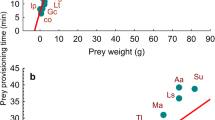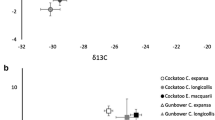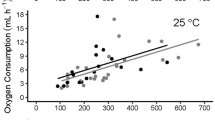Abstract
Birds on migration often alternate between feeding and nonfeeding periods, in part because food resources may be patchily distributed and in part because birds on migration may adopt a risk-prone foraging strategy characterized by selection of variable rather than constant food rewards. Optimal digestion models predict that increases in intermeal interval like those encountered by some migratory birds should result in longer retention time of digesta and higher digestive efficiency if birds are maximizing their rate of energy intake. We tested these predictions by comparing residence time of digesta and extraction efficiency of lipid for captive yellow-rumped warblers (Dendroica coronata) feeding adlibitum and when we added intervals of time when the birds received no food. We increased the likelihood that the warblers were maximizing their rate of energy intake by increasing light levels during spring to induce hyperphagia (treatment birds (16L:8D light: dark cycle) ate 2.13 ± 0.14 g dry food day−1 (n = 8) while control birds (10L:14D) ate 1.25 ± 0.03 g dry food day−1 (n = 6)). Treatment birds offered food only every other 2–3 h ate 50% more during the 4-h test period than when they were always feeding adlibitum. Despite these differences in food intake, extraction efficiency of glycerol trioleate remained high and constant (93%), and mouth-to-anus total mean retention time (TMRT) did not change (overall mean: 54.8 ± 6.0 min). Residence time of lipid in the stomach increased whereas residence time of lipid in the intestine decreased when birds fed only every other 2–3 h compared to when birds always fed ad libitum. None of the results were consistent with the predictions of the optimal digestion model unless we assume that birds were minimizing their feeding time rather than maximizing their rate of energy gain. Furthermore, the ability of yellow-rumped warblers to maintain high extraction efficiency with no change in TMRT suggests some spare digestive capacity when food intake increases by as much as 50%.
Similar content being viewed by others
Author information
Authors and Affiliations
Additional information
Received: 14 June 1997 / Accepted: 20 November 1997
Rights and permissions
About this article
Cite this article
McWilliams, S., Karasov, W. Test of a digestion optimization model: effect of variable-reward feeding schedules on digestive performance of a migratory bird. Oecologia 114, 160–169 (1998). https://doi.org/10.1007/s004420050432
Issue Date:
DOI: https://doi.org/10.1007/s004420050432




